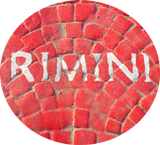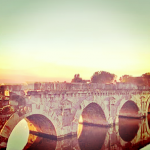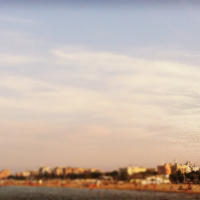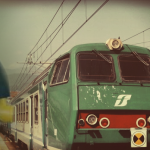Castel Sismondo (The Malatesta Castle)
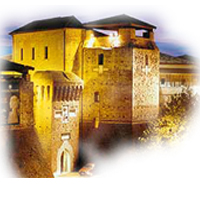 Many tourists venturing into Rimini’s historic town centre, unfortunately, completely miss one of its medieval treasures – the Malatesta Castle (Castel Sismondo), hidden as it is behind Piazza Cavour and the Teatro Galli. A shame, as the castle is not only visually impressive, dominating the modern surroundings of a car park where, twice weekly, the local market is held, but it is a wonderful gateway into Italian medieval history.
Many tourists venturing into Rimini’s historic town centre, unfortunately, completely miss one of its medieval treasures – the Malatesta Castle (Castel Sismondo), hidden as it is behind Piazza Cavour and the Teatro Galli. A shame, as the castle is not only visually impressive, dominating the modern surroundings of a car park where, twice weekly, the local market is held, but it is a wonderful gateway into Italian medieval history.
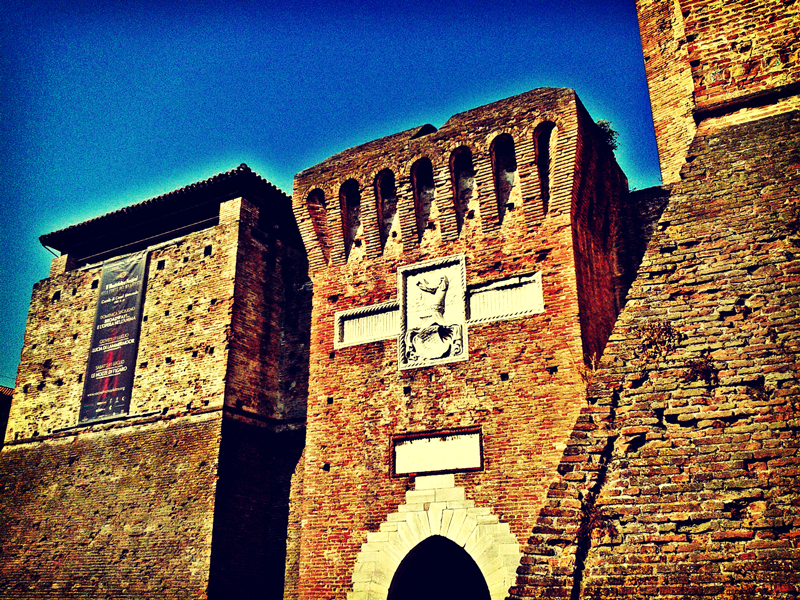
The Castle was started by Sigismondo Malatesta, in 1437, and finished in 1446. If you look at the inscriptions on the Castle’s robust surviving walls (much of the castle is intact, despite the centuries of bombardment it has undergone) Sigismondo claimed to have built the structure a fundamentis, or from its foundations, but the truth is that, as with many of his castles dotted around the Romagna/Marche region, he built on top of existing structures. In the case of Rimini’s Castle there were already thirteenth century fortifications and structures built by Sigismondo’s predecessor Galeotto Roberto Malatesta. During reconstruction work, archaeologists have identified a late Roman gate built into the Castle’s walls, for example.
The Castle served two important functions. Firstly, the obvious defensive function. Sigismondo was ruler of various cities and townlands, and was often in conflict with other competing powers, most notably the Montefeltro family of Urbino and the Papacy. The second function was for prestige, and indeed, in keeping with his artistic ‘renaissance man’ reputation, the castle is no standard bricks and mortar construciton. Instead it is impressively irregular and strange.
In the 13th century artillery existed in Europe, but was still heavy and cumbersome to deploy. Developments in ironwork and gunpowder technology led, in the 15th century to the introduction of ‘canon’, lighter artillery that could arrive relatively quickly on the battlefield to break down an enemy’s defences. Innovations such as these led in turn to innovations in architecture, as Sigismondo Malatesta, and other Italian rulers, sought to build new defensive structures capable of withstanding powerful attacks.
The building of the castle was a massive work, which included the levelling of nearby buildings (including a convent), and the lowering of the bell tower of a nearby cathedral. Malatesta invited some of the great minds of the renaissance to Rimini to supervise his building work, including Brunelleschi.
To get an idea of what the castle looked like in it’s heyday, we have to turn to historians and artworks of the period. For example, to picture the actual structure as it was in the late 1450s, one has to refer to a medal minted by Matteo de’ Pasti, one of Malatesta’s court artists – a medal minted to celebrate the castle’s construction. It, alongside a celebrated painting by Piero Della Francesca, depicts the castel with various towers, arches, and masonry that have long since been destroyed. Artists’ depictions and accounts from the time also let us know that, rather than the austere stone building it is today, the castle would have been splendidly decked out in the heraldic colours of the Malatesta, red and green.
Some notable features of the castle include irregular picturesque design, the use of pointed arches along with stone and ceramic inserts. There are long passageways, and perhaps surprisingly for a castle that doubled as a residence, there is a marked absence of large reception rooms. That’s not to say that the Castle was spartan, far from it. An inventory of Malatesta’s wealth taken when he died in the Castle in 1468 detailed great and small rooms, numerous chambers, all decorated with precious fabrics, and murals, with chests and wardrobes containing books, documents, jewellry and garments. In addition the castle was loaded with weapons, banners, standards, and military equipment.
After the fall of the Malatesta, the castle ceased to be a princely residence, and took on a purely military role. Over the centuries it changed hands, and was latterly called Castello Urbano, in honour of Pope Urban VIII under whom Rimini as part of the Papal States fell. It served both as a fortress and a prison.
The castle nowadays serves as a hugely impressive setting for various conferences, exhibitions, and displays, managed by the Carim Foundation (Carim is a local bank). During the summer months the foundation sponsors a number of events in the castle, along with regular guided visits inside the castle walls.
On Wednesdays and Saturdays the area in front of the castle, and through to Piazza Cavour plays host to a lively market, with different stalls selling virtually everything you could imagine, ranging from food through to shoes, jeans, handbags, underwear, and kitchen implements!
